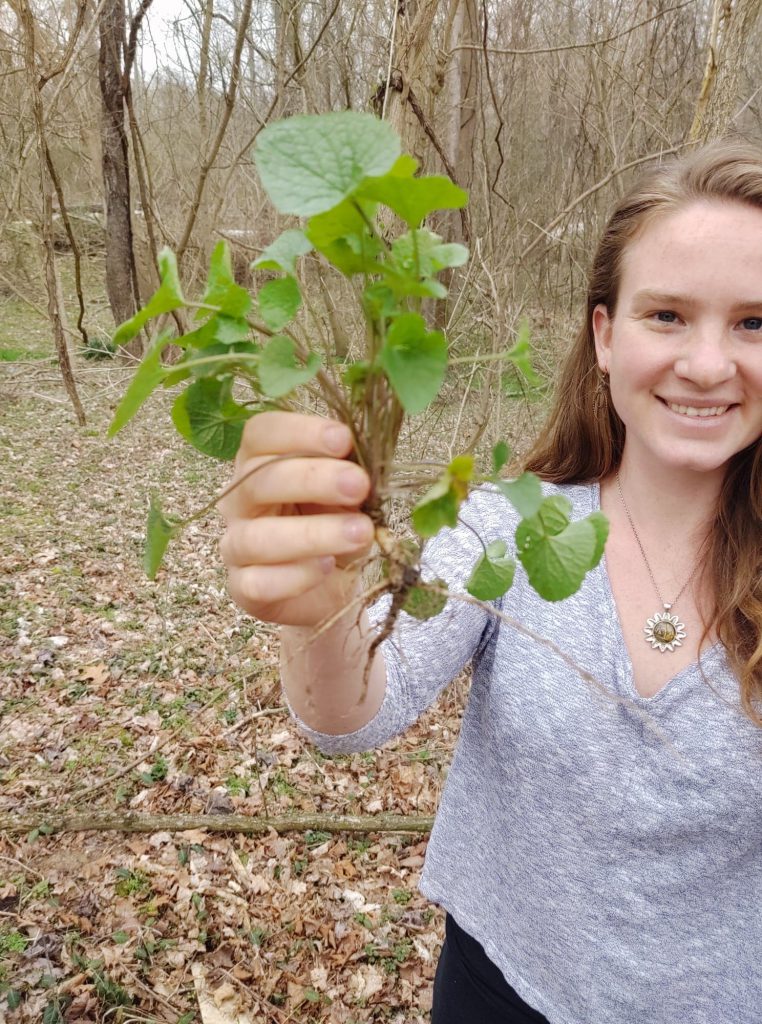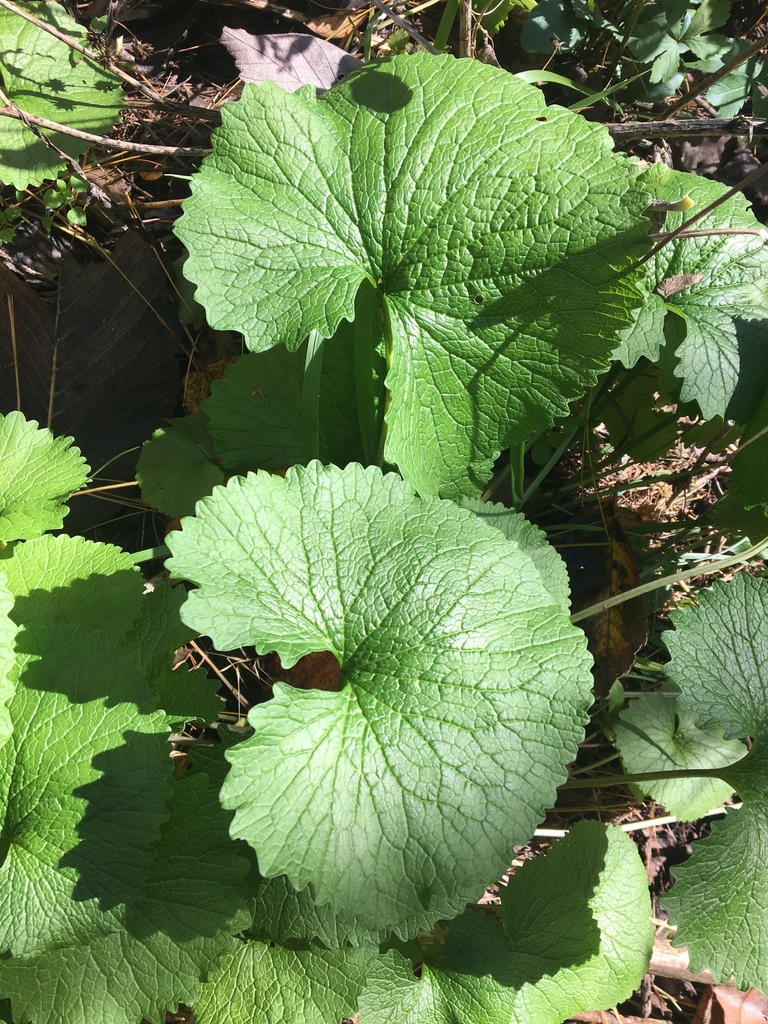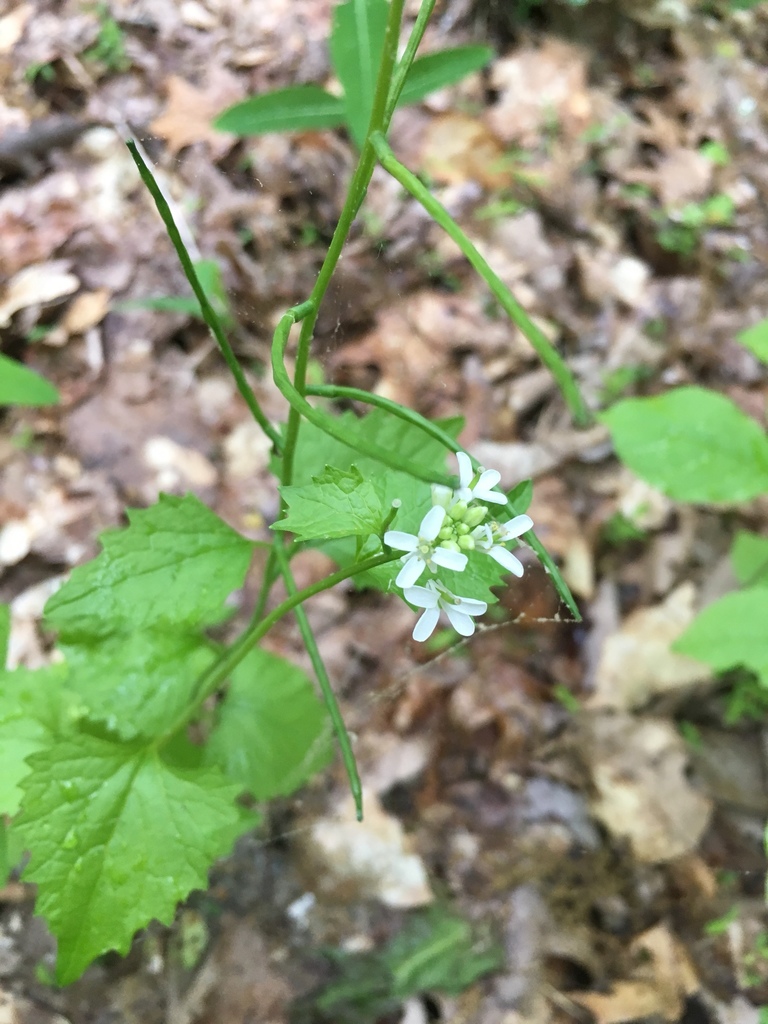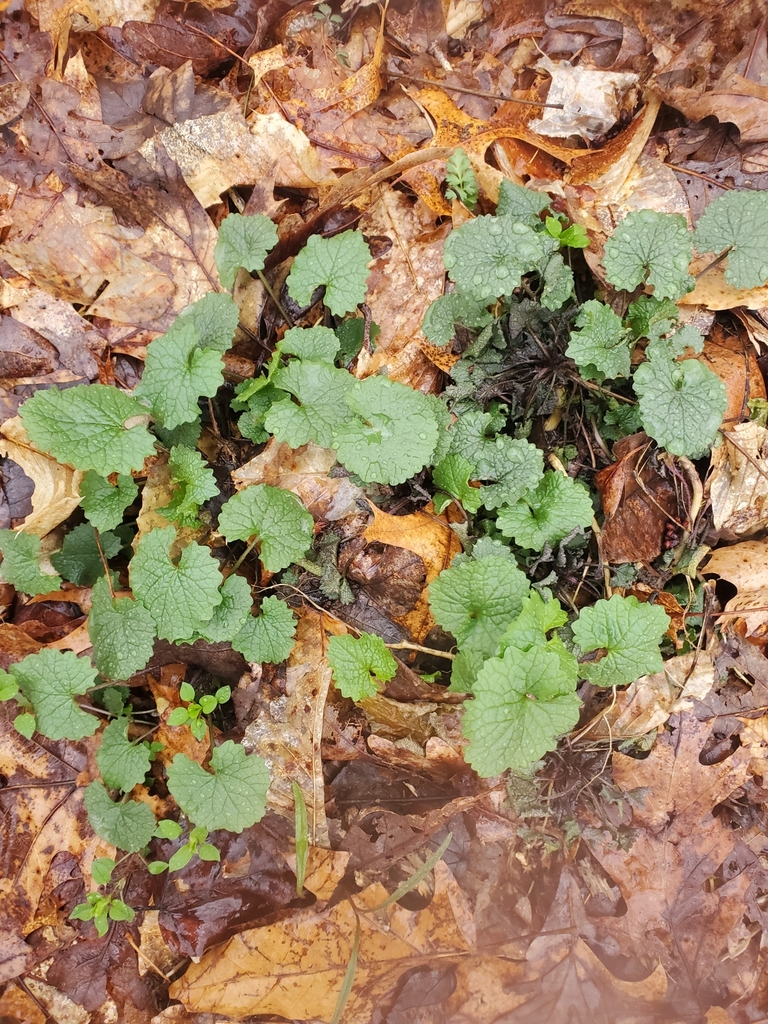Last week, Brett taught us how to forage for tasty wild plants. He told us to only harvest a few plants from any patch. Today, we’re going to discover an exception to that rule. You can pull up every single one of this kind of plant.
It goes by many names: Garlic Mustard, hedge garlic, sauce-alone, jack-by-the-hedge, poor man’s mustard, jack-in-the-bush, garlic root, garlic wort, mustard root.

We will call this plant Garlic Mustard during today’s activity, but you can call it any of those names. Scientists have come up with a fancy Latin name to make sure other scientists know exactly what they are talking about. Alliaria petiolata is how scientists say Garlic Mustard.
This picture of Garlic Mustard was taken by Leigh Casal on iNaturalist
Invasive- Have you heard of an alien invasion before? Invasive plants are kind of like an alien invasion, except they don’t come from outer space. Invasive plants come from distant ecosystems. They are able to grow extremely fast and take over the new ecosystem they are growing in, causing damage to their new ecosystem. They can take up all the food, space, or water, making survival more difficult for the original plants.
Garlic Mustard is an invasive plant from Europe. It’s been slowly taking over our forest for over 150 years! It can even release a chemical in the soil that stops other plants from growing. We need you to help save our forest. All you have to do is pull this plant up wherever you find it!
Luckily removing this invader is simple, easy and rewarding. But first we need to know how to find it.

Garlic Mustard will look different during different stages of its life cycle.
Both of these plants are Garlic Mustard. The picture on the left
Identifying Garlic Mustard Identifying young plants can be tricky. Try a sniff test: crush a leaf in your fingers, and see if it smells garlicky. The leaves of a young plant are dark-green and kidney shaped with scalloped edges. It grows in clumps on the ground.
Older plants are taller, 1-2 feet, and the leaves become more triangular. The stems have little hairs on them. They also smell like garlic when you crush them, but not as strongly.
For more information on how to identify Garlic Mustard and its impacts, go to: http://nyis.info/invasive_species/garlic-mustard/ and https://www.invasive.org
Where does it grow and how do we get rid of it?
Garlic mustard is abundant on the shaded floor of moist, leafy forests. It also grows well in places humans have disturbed the ground, like trails, shaded roadsides, and the edges of forest, fields, or fences. Take a look around your neighborhood. You may be surprised what you find!
When you pull it up, make sure to pull the root out, not just the leaves! Otherwise it will grow right back. This is easiest after a spring rain, when the soil is soft.
It’s important to pull the plant before it makes any seeds. Otherwise, you may spread its seeds around, planting more!

What do we do with the plant once it’s pulled you may ask? Eat it! That’s right, remember earlier in the activity when we said “removing this invader is simple, easy and rewarding.” That’s because it’s delicious! The plant’s nickname “Poor Man’s Mustard” comes from the abundance of the plant and its taste.
Remember to always ask an adult before eating anything you find in nature. So grab an adult and let’s get cooking!
Making Pesto
For a simple way to spice up your lunch, add garlic mustard to a salad or sandwich, just as it is. Or, try making pesto!
This is one of my favorite recipes for making pesto. Pesto can be added to pasta dishes or serve as a tasty spread.
- 1 cup garlic mustard, or more!
- 1/2 cup basil(spinach for a milder taste)
- 3 cloves garlic
- 2 oz. of either toasted: pine nuts, cashews, peanuts, or walnuts all work
- 4 oz. olive oil
- juice of 1 lemon
Combine all ingredients except olive oil in the food processor( these have sharp blades so be sure an adult is present). Puree and add olive oil with the processor running. Pesto can be added to pasta dishes or serve as a tasty spread.

Together we can stop Garlic mustard from taking over the forest we love!



3 replies on “A Call to Protect our Forest—by eating it”
I think it smells like a bologna sandwich! We made ramp pesto this week (delicious!) and will definitely try garlic mustard pesto next!
Thank you for sharing all this cool and fun information.
That’s amazing, what a great way to be able to identify something! I also love ramp pesto, sometimes I like to mix ramps and garlic mustard together in one pesto. Thank you for contributing to the post and helping to protect our forest!
[…] 1/2 cup grated horseradish or garlic mustard root […]